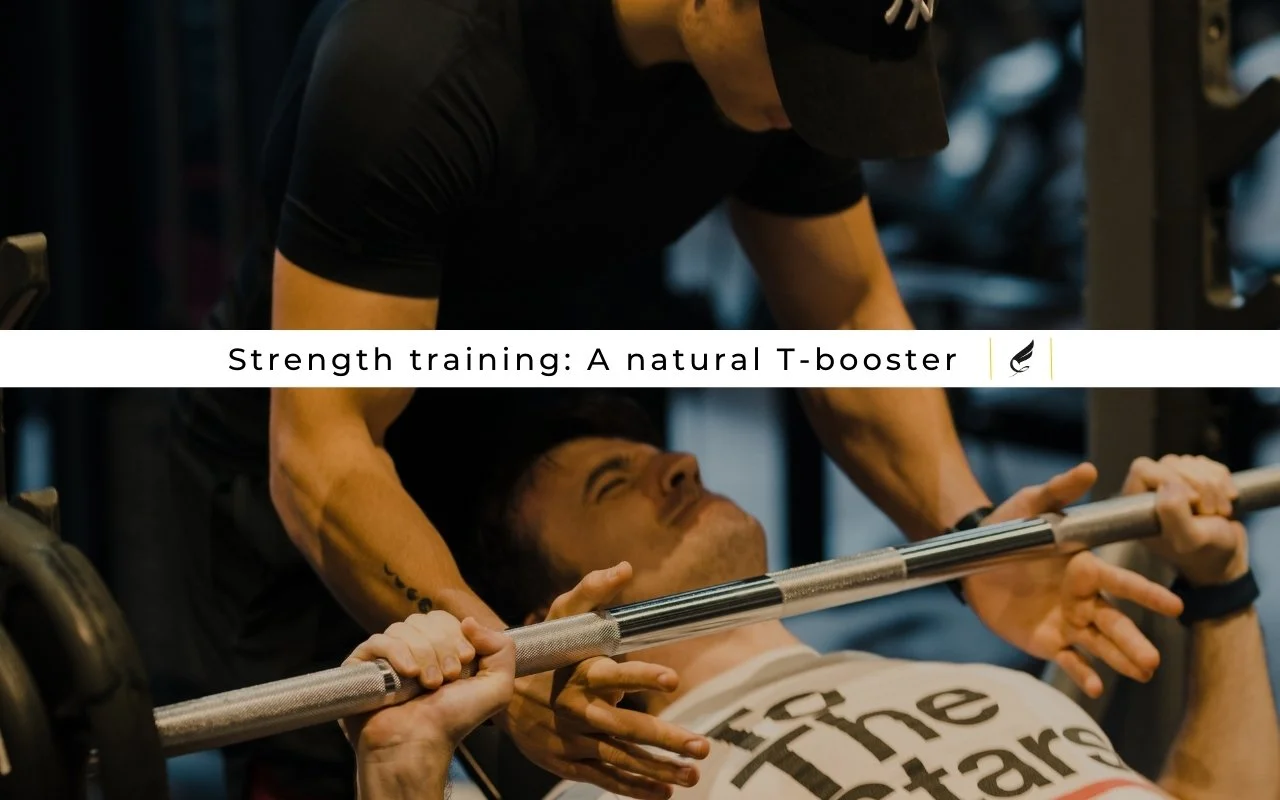How to Naturally Increase Testosterone: The Fortius Lifestyle Protocol
Understanding that your testosterone levels may be suboptimal is the first step. The next, more empowering step is taking decisive action on your men's health. While the internet is filled with "quick fixes" and questionable testosterone boosters like herbal supplements, the reality is that building and maintaining healthy testosterone levels comes down to a consistent, disciplined application of fundamental healthy lifestyle principles.
This isn't about chasing trends; it's about building a robust system to boost testosterone and improve your overall health.
This is the Fortius protocol for the natural ways to increase testosterone. It's a strategic framework built on four pillars, designed for busy professionals in Dubai who demand tangible results and want to achieve optimal levels without resorting to medical treatments like Testosterone Replacement Therapy (TRT) unless medically necessary.
Pillar 1: Train for Hormonal Response
Your training is a direct signal to your endocrine system. To increase testosterone production, you must send the right message.
Prioritize Heavy Resistance Training: This is non-negotiable. Your workout routine must be built around multi-joint, compound exercises like squats, deadlifts, and overhead presses. Resistance training creates a significant hormonal stimulus that lighter exercises cannot replicate, leading to more testosterone release.
Focus on Intensity, Not Volume: Long, grueling workouts can elevate cortisol levels. Your primary stress hormone, cortisol, actively works to suppress testosterone production. Your goal should be short, intense sessions lasting no more than 45-60 minutes to maximize the benefit for your hormone levels.
Strategic Use of HIIT: Instead of chronic cardio, incorporate High-Intensity Interval Training (HIIT). Two to three short sessions per week can improve insulin sensitivity and support a lean body composition, which is crucial as excess body fat can convert testosterone into estrogen.
Pillar 2: Eat for Testosterone Production
Your food intake provides the essential building blocks for hormone production. You cannot build a strong house with a poor diet or low-fat diets.
Make Healthy Fats Your Priority: Cholesterol is the raw material from which this steroid hormone is made. A diet too low in fat can directly hinder your body's ability to produce testosterone. Ensure you consume plenty of healthy fats from sources like egg yolks, avocado, nuts, olive oil (especially extra virgin olive oil), and fatty fish.
Consume Adequate Protein: A high protein intake is crucial for maintaining and building muscle mass. Healthy muscle tissue plays a key role in hormonal regulation.
Optimize Key Micronutrients: A vitamin D deficiency is strongly linked to low testosterone levels. Sensible sun exposure is key. Furthermore, zinc supplementation has been shown in some studies to help men with testosterone deficiency.
Pillar 3: Master Your Sleep Environment
This is the most potent, free performance-enhancing tool available. The most testosterone release happens during deep sleep, particularly rapid eye movement (REM) sleep.
Mandate 7-9 Hours: Treat sleep like your most important business meeting. It is non-negotiable. Consistently failing to get 7-9 hours of quality sleep per night is one of the fastest ways to sabotage your serum testosterone levels. Conditions like sleep apnea can also have a severe impact.
Optimize Your Sleep Hygiene: This means making your bedroom completely dark and cool, avoiding screens for an hour before bed, and maintaining a consistent sleep-wake cycle.
Pillar 4: Actively Manage Your Stress
Chronic stress is the silent killer of male hormonal health. The primary stress hormone, cortisol, has a direct and inverse relationship with testosterone—when cortisol is high, testosterone goes down. How stress affects you can be managed.
Schedule Deliberate Downtime: You schedule meetings; you must also schedule time for recovery. This could be meditation, reading, or simply sitting in silence for 10-15 minutes a day.
Limit Stimulants and Excessive Alcohol Consumption: An over-reliance on caffeine is often a sign your underlying energy systems are compromised. Similarly, heavy alcohol consumption is directly toxic to testosterone production.
Conclusion: From Knowledge to Action
Knowing how to naturally increase testosterone is one thing; implementing it consistently is another. This protocol isn't a list of suggestions; it's a system for a high-performance life. It is the best way to support testosterone levels and avoid health problems like low bone density, poor sexual function, and high blood pressure.
If you are experiencing symptoms of low testosterone and suspect an issue, the first step is always to consult a healthcare provider for a blood test to measure your total testosterone and free testosterone levels. This can help rule out underlying health conditions like male hypogonadism.
However, for most men looking to achieve healthy levels, focusing on these four pillars is the most powerful action you can take.
For a complete overview of men's health and testosterone, you can read our foundational article on this topic.
Click Here to Read The Ultimate Guide to Testosterone Optimization for Men in Dubai







